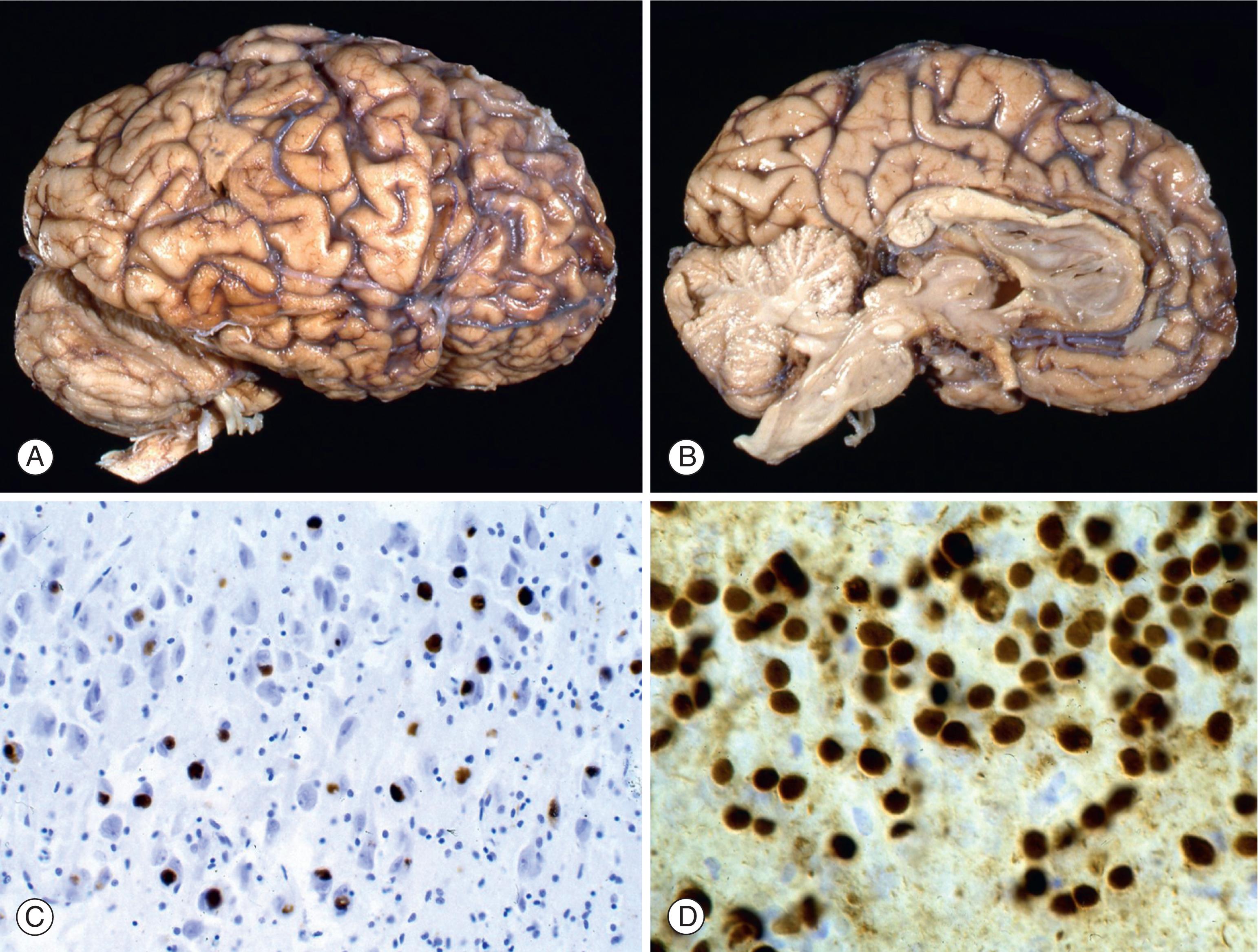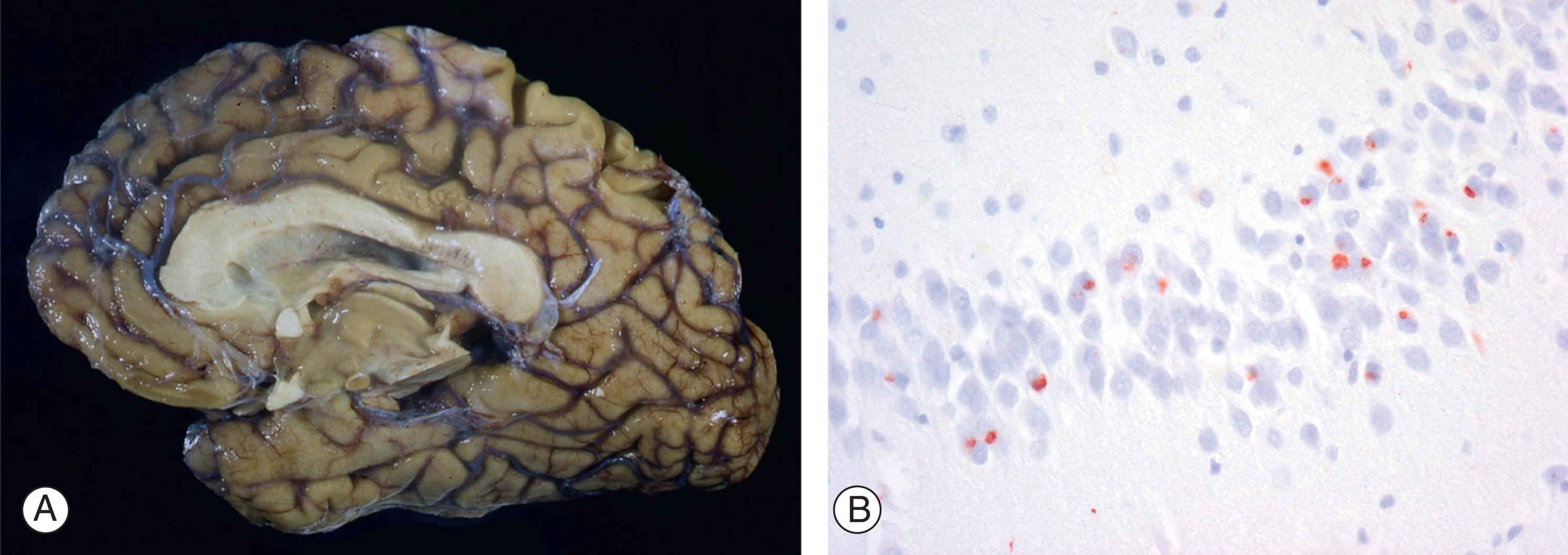Physical Address
304 North Cardinal St.
Dorchester Center, MA 02124
| Definition |
|
| Prevalence |
|
| Genetic risk |
|
| Cognitive and behavioral symptoms |
|
| Diagnostic criteria |
|
|
|
| Treatment |
|
| Top differential diagnoses |
|
A 63-year-old man was brought to the clinic by his family because of his memory difficulties, apathy, and inappropriate behavior. They reported that the problems began 3 to 4 years ago; at that time he did not wash, dress, eat, or take his medications without prompting. Although he used to be very kind and caring, he now appeared unconcerned with others, and did not show any emotion over his wife’s recent diagnosis of cancer and need for surgery. Overall, he seemed like a different person to them. Most recently they had to put a lock on the refrigerator because he began eating continually. They now do not feel comfortable leaving him at home alone for fear he would “get into something” that could be dangerous or cause damage.
Behavioral variant frontotemporal dementia (bvFTD) is a progressive neurodegenerative syndrome leading to changes in personality and social conduct. There are more than a dozen different underlying patterns of frontotemporal lobar degeneration (FTLD) pathology that can cause both behavioral variant frontotemporal dementia as well as the semantic and nonfluent/agrammatic variants of primary progressive aphasia (PPA) (see Chapter 9 ). Alzheimer’s disease pathology can lead to the syndrome of behavioral variant frontotemporal dementia about 10% to 15% of the time ( ).
Behavioral variant frontotemporal dementia is most common in midlife with a mean age of onset at 58 years, although it can present from the third to the tenth decade. Its prevalence reaches about 13 per 100,000 in individuals in their early sixties ( ). It may be as common as Alzheimer’s disease in those with dementia aged younger than 65 years. It represents about 5% of patients in memory clinics. Although there is considerable variability, the average time from symptom onset to death in behavioral variant frontotemporal dementia is about 8 years.
The International Behavioral Variant Frontotemporal Dementia Criteria were published in 2011 ( ) ( Box 10.1 ) and are the gold standard; we use this version with the specificity added for several items by . Diagnostic and Statistical Manual of Mental Disorders, 5th Edition also has criteria for Major or Mild Frontotemporal Neurocognitive Disorder ( Box 10.2 ; see Chapter 3 for the general criteria for major and mild neurocognitive disorder).
Shows progressive deterioration of behavior and/or cognition by observation or history (as provided by knowledgeable informant)
Possible behavioral variant frontotemporal dementia: Three of the following behavioral/cognitive symptoms [a–f] must be present as persistent or recurrent events:
a Early refers to symptoms within the first 3 years.
Early behavioral disinhibition (one of the following must be present):
Socially inappropriate behavior
Loss of manners or decorum
Impulsive, rash, or careless actions
Early apathy or inertia (one of the following must be present):
Apathy: loss of interest, drive or motivation
Inertia: decreased initiation of behavior
Early loss of sympathy or empathy (one of the following must be present):
Diminished response to other people’s needs or feelings: positive rating should be based on specific examples that reflect a lack of understanding or indifference to other people’s feelings
Diminished social interest, interrelatedness or personal warmth: general decrease in social engagement
Early perseverative, stereotyped, or compulsive/ritualistic behavior (one of the following must be present):
Simple repetitive movements
Complex, compulsive, or ritualistic behaviors
Stereotypy of speech
Hyperorality and dietary changes (one of the following must be present):
Altered food preferences
Binge eating, increased consumption of alcohol or cigarettes
Oral exploration or consumption of inedible objects
Neuropsychological profile: executive/generation deficits with relative sparing of memory and visuospatial functions (all of the following must be present):
Deficits in executive tasks
Relative sparing of episodic memory (compared with degree of executive dysfunction)
Relative sparing of visuospatial skills (compared with degree of executive dysfunction)
Probable behavioral variant frontotemporal dementia: All criteria must be met:
Meets criteria for possible behavioral variant frontotemporal dementia
Exhibits significant functional decline (by caregiver report, clinician rating, or functional questionnaire)
Imaging results consistent with behavioral variant frontotemporal dementia
Frontal and/or anterior temporal atrophy on computed tomography or magnetic resonance imaging, and/or
Frontal and/or anterior temporal hypoperfusion or hypometabolism on single photon emission computed tomography or positron emission tomography
Behavioral variant frontotemporal dementia with definite frontotemporal lobar degeneration pathology. Criterion a and either b or c must be present:
Meets criteria for possible or probable behavioral variant frontotemporal dementia
Histopathological evidence of frontotemporal lobar degeneration on biopsy or at postmortem
Presence of a known pathogenic mutation
Exclusionary criteria for behavioral variant frontotemporal dementia. Criteria a and b must be answered negatively. Criteria c can be positive for possible (but not probable) behavioral variant frontotemporal dementia.
Pattern of deficits is better accounted for by other nondegenerative nervous system or medical disorders
Behavioral disturbance is better accounted for by a psychiatric diagnosis
Biomarkers strongly indicative of Alzheimer’s disease or other neurodegenerative process
The criteria are met for major or mild neurocognitive disorder.
The disturbance has insidious onset and gradual progression.
Either (1) or (2)
Behavioral variant:
Three or more of the following behavioral symptoms:
Behavioral disinhibition
Apathy or inertia
Loss of sympathy or empathy
Perseverative, stereotyped, or compulsive/ritualistic behavior
Hyperorality and dietary changes.
Prominent decline in social cognition and/or executive abilities.
Language variant:
Prominent decline in language ability, in the form of speech production, word-finding, object naming, grammar, or word comprehension.
Relative sparing of learning and memory and perceptual-motor function.
The disturbance is not better explained by cerebrovascular disease, another neurodegenerative disease, the effects of a substance, or another mental, neurological, or systemic disorder.
Probable frontotemporal neurocognitive disorder is diagnosed if either of the following is present; otherwise, possible frontotemporal neurocognitive disorder should be diagnosed:
Evidence of a causative frontotemporal neurocognitive disorder genetic mutation, from either family history or genetic testing.
Evidence of disproportionate frontal and/or temporal lobe involvement from neuroimaging.
Possible frontotemporal neurocognitive disorder is diagnosed if there is no evidence of a genetic mutation, and neuroimaging has not been performed.
Other than family history there are no known risk factors for frontotemporal dementia. If a family history of dementia, psychiatric illness, Parkinson’s disease, or amyotrophic lateral sclerosis are all considered positive indicators, one may conclude from various studies that up to 40% of cases of frontotemporal dementia are familial, and about 10% to 20% have a clear autosomal dominant pattern. The best studied familial frontotemporal dementia syndrome is that of familial frontotemporal dementia with parkinsonism linked to chromosome 17. Individuals with this disorder have a mutation in the microtubule-associated protein tau (MAPT) gene located in the chromosome 17q21-22 region, develop symptoms relatively younger, and may have more symmetric temporal lobe atrophy. Individuals with mutations of progranulin (GRN; chromosome 17q21) can develop behavioral variant frontotemporal dementia, nonfluent/agrammatic variant primary progressive aphasia, corticobasal syndrome, and Alzheimer’s disease. Mutations of chromosome 9 open reading frame 72 (C9orf72) is the most common cause of inherited behavioral variant frontotemporal dementia, amyotrophic lateral sclerosis, and the combined frontotemporal dementia–motor neuron disease; psychotic features are relatively more common in these patients. Other genetic abnormalities that have been associated with frontotemporal dementia include those of the RNA-binding protein fused in sarcoma (FUS; chromosome 16), valosin-containing protein (VCP; chromosome 9p12-13), charged multivesicular body protein 2B (CHMP2B; chromosome 3), and TAR DNA-binding protein (TARDBP; chromosome 1), the gene that encodes TDP-43 ( ).
Currently there are more than a dozen different pathologies that have been observed in patients diagnosed with behavioral variant frontotemporal dementia; we use the term frontotemporal lobar degeneration (FTLD) to refer to the underlying pathological entities that cause the frontotemporal dementias. Many frontotemporal dementias show tau-positive inclusions. These include classic Pick’s disease which has tau- and ubiquitin-positive spherical cortical inclusions, familial frontotemporal dementia with characteristic tau-positive inclusions in neurons and glial cells, and argyrophilic grain disease. Many patients with frontotemporal dementias, particularly those with motor neuron disease but also those without it, also show ubiquitin-positive inclusions. TDP-43 immunoreactive inclusions are also common. Neuronal filament inclusions are sometimes observed. See Figs. 10.1 and 10.2 for two of the more common pathologies.


Become a Clinical Tree membership for Full access and enjoy Unlimited articles
If you are a member. Log in here